Roughly 200 km northwest of the city of Agadez, in northern Niger, lies a tiny village of around 50 families called Teguidda-n-Tessoumt. The population here is largely seasonal, based in the nearby town of Ingall who oversee a historic and quite unusual salt producing industry. The principal source of salt here is, not water, for this is the Sahara and there is no sea around for thousands of kilometers. The precious salt is, hence, extracted from clay.
The entire village is pockmarked with hundreds of salt ponds filled with pastel colored brine water, attended to by men, women, and children all hard at work. There are small hills all around some of which are 30 feet high, and they were all created by the deposition of clay from many years of salt extraction in the area.

Photo credit: George Steinmetz
The region has about 20 springs whose water is itself quite briny. However, it’s the clay from where salt is extracted. The salt laden clay is dug up and brought to large ponds some six feet in diameter and filled with water from the springs. A man then stomps the mixture with his feet to create a thick slurry. The briny mix is then left to settle for several hours. There are several such decantation ponds and each one displays a different shade of brown depending on the original color of the clay, the salinity of the solution and the level of precipitation. Algae grows in some of the ponds and also colors the water. The ponds also change hue and tone as the sun’s burning rays shift their angle of reflection.
Once the mud has settled, the salty water is drawn from the pond using a calabash—a utensil made from the shell of a gourd—and poured into the smaller evaporation ponds. This part of the process is handled by the men, who are also responsible for the maintenance of the ponds. The women’s job is to remove the salt crystals from the evaporating ponds, and then thoroughly clean the ponds in readiness for the next batch.
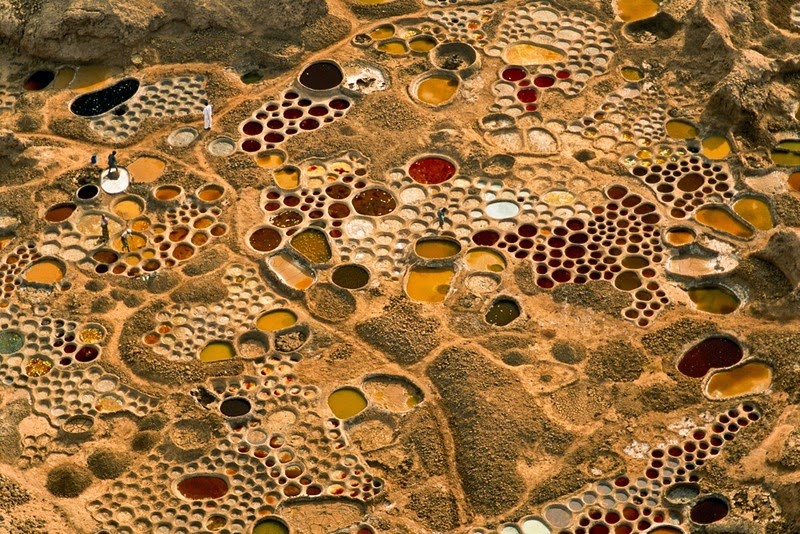
Photo credit: George Steinmetz
Meanwhile, children scamper about among the smaller ponds monitoring the drying process. As the water evaporates from the ponds, crystals form on the surface. If left unchecked, this salty crust would block further evaporation. So the children sprinkle the surface with drops of water to break the crust and cause the crystals to sink to the bottom of the pond. Evaporation continues until finally only the precious salt remains.
The extracted salt is then shaped into blocks or cakes and dried in the sun. This salt is sold to nomads and salt merchants who trek through Teguidda-n-Tessoumt, trading food and other goods in exchange for the salt. Most of the salt, however, is sold in the markets of the larger towns on the fringe of the desert. The raw salt from this village is generally not used for human consumption, but as a supplement for the diet of domestic animals.
The residual clay from the empty decanting ponds is removed and dumped nearby contributing to the numerous man-made mounds that dot the area.
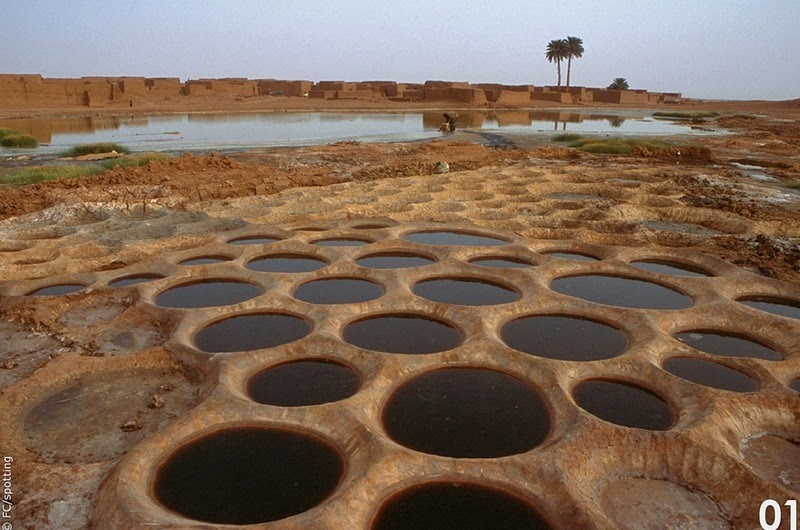
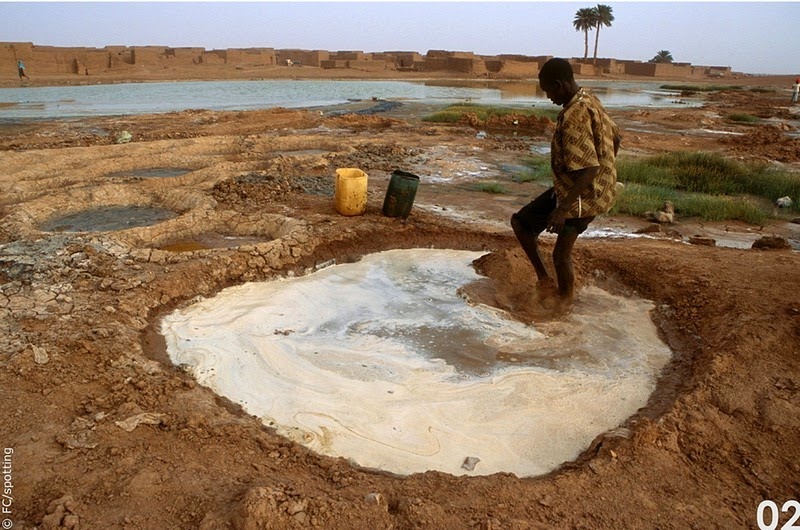
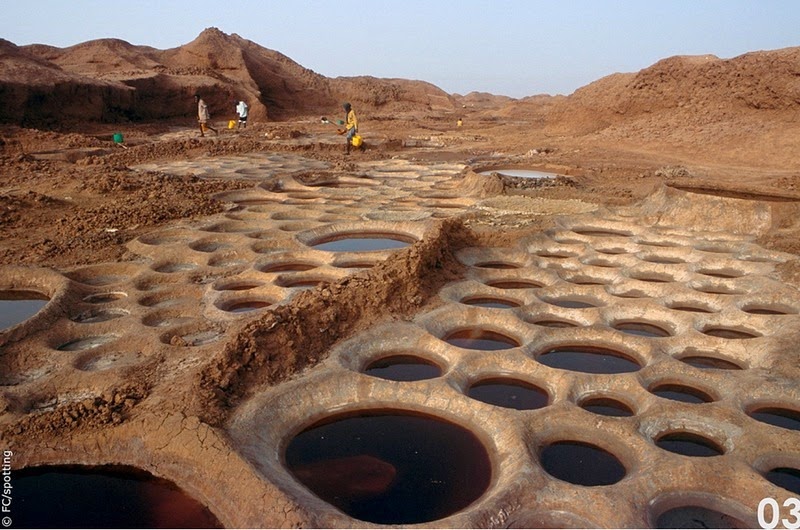
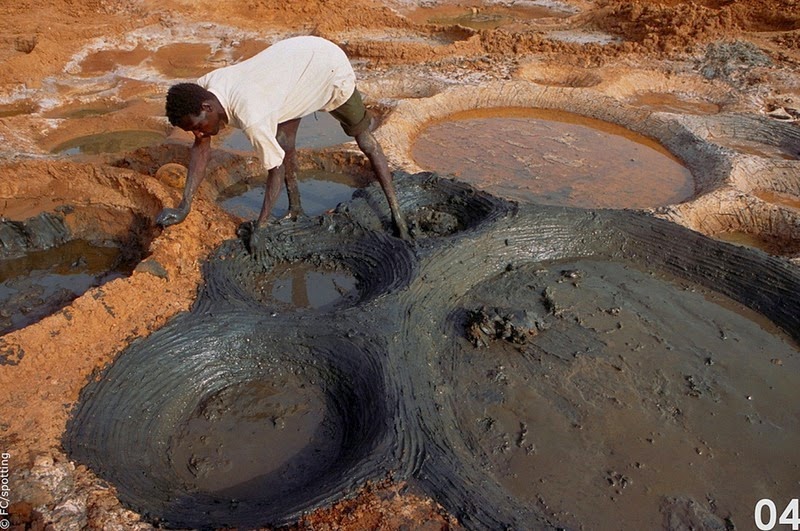
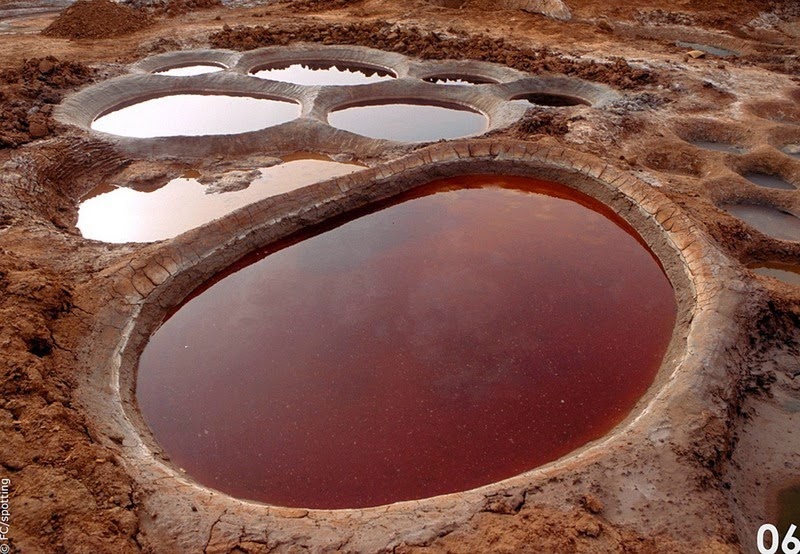
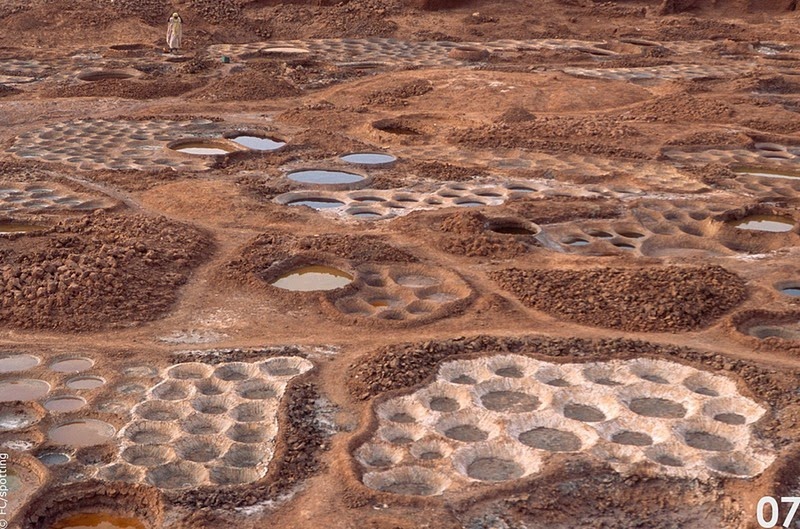
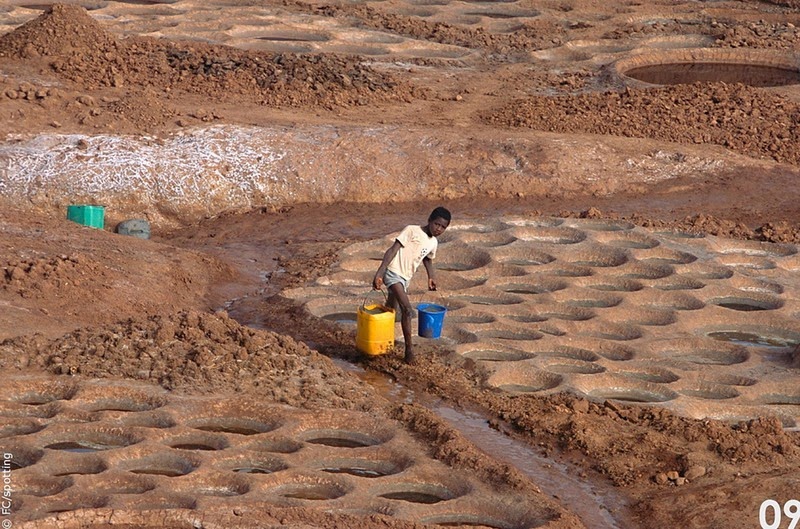
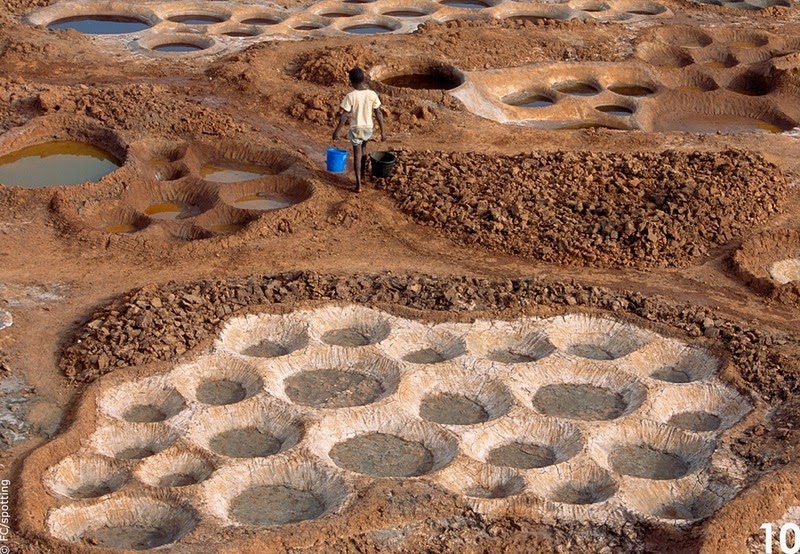

Photo credit: Google Maps
Sources: Salt Seekers of the Sahara / Wikipedia



Hello,
ReplyDeleteI am looking for Florence Canal contacts in order to contact her for requesting one of her pictures copyrights authorization? Can you help me?
Thanks very much in advance.